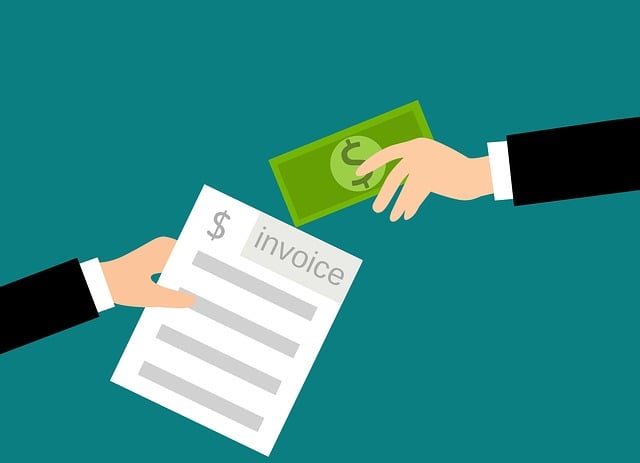Spot factoring and whole ledger factoring are two distinct methods for businesses to manage cash flow. Spot factoring allows companies to sell specific invoices for immediate funding, ideal for short-term needs and inconsistent revenue streams. Whole ledger factoring involves selling all eligible accounts receivable for a steady cash stream, suitable for established companies with consistent sales cycles. Comparing these options is crucial for optimizing cash flow, as each has unique benefits and is better aligned with different business scenarios: spot factoring offers flexibility and quick access for sporadic cash flows, while whole ledger provides a more comprehensive solution for consistent financial needs. Effective cash management through factoring can drive business success, and understanding these differences enables companies to choose the optimal approach to enhance their overall financial health.
In today’s fast-paced business landscape, efficient cash flow management is paramount. This article guides you through the crucial decision of choosing between spot factoring and whole ledger factoring, two powerful tools for enhancing your company’s financial health. We’ll explore the benefits of spot factoring, its streamlined approach, and how it can optimize cash flow. Conversely, we’ll delve into whole ledger factoring, a comprehensive strategy, and compare these options to help you select the best method for your business’ unique cash management needs.
- Understanding Spot Factoring and Its Benefits
- Exploring Whole Ledger Factoring: A Comprehensive Approach
- Compare and Contrast: Spot vs. Whole Ledger Factoring Options
- Optimize Cash Flow: Strategies for Effective Factoring
- Choosing the Right Factoring Method for Your Business
- Advanced Cash Management Techniques Using Factoring
Understanding Spot Factoring and Its Benefits

Spot factoring offers a flexible and efficient way to manage immediate cash flow needs. Unlike whole ledger factoring, it involves selling just a portion of outstanding invoices at any given time. This approach allows businesses to optimize their cash flow by accessing funds quickly for specific, urgent requirements. It’s an ideal solution for companies looking to compare factoring options and choose the best approach for their business cash management strategies.
By focusing on individual invoices rather than entire financial ledgers, spot factoring provides a more tailored and responsive financing method. Businesses can select which accounts receivable to factor based on their current needs, avoiding unnecessary expenses if they have healthy cash flow between full ledger factoring payments. This flexibility is particularly beneficial for businesses navigating fluctuating sales cycles or unexpected cash flow gaps.
Exploring Whole Ledger Factoring: A Comprehensive Approach

Exploring Whole Ledger Factoring offers a comprehensive approach to business cash management. Unlike spot factoring, which focuses on individual invoices or transactions, whole ledger factoring provides a broader perspective by considering an entire company’s accounts receivable as collateral. This method allows businesses to unlock significant benefits like improved cash flow and optimized financial operations. By comparing factoring options, entrepreneurs can choose the approach best suited for their needs, ensuring efficient management of their business finances.
Whole ledger factoring enables a deeper level of customization and control over cash flow. It streamlines the financing process by factoring all eligible receivables, eliminating the need to select specific invoices each time. This comprehensive strategy not only saves time but also enhances financial predictability, empowering businesses to make informed decisions regarding growth and expansion. When deciding between spot and whole ledger factoring, understanding these differences is key to selecting the most effective method for optimizing cash flow and driving business success.
Compare and Contrast: Spot vs. Whole Ledger Factoring Options

When comparing spot factoring and whole ledger factoring, understanding the nuances between these two financial strategies is key to optimizing your business’s cash flow management. Spot factoring involves selling a portion of outstanding invoices for immediate cash, focusing on individual sales or transactions. This approach offers significant benefits like quick access to funds, improved cash flow forecasting, and reduced administrative burdens for that specific invoice sale. It’s ideal for businesses dealing with short-term, high-value invoices and need rapid liquidity.
Whole ledger factoring, on the other hand, involves selling all eligible invoices from a company’s sales ledger to a factor. This comprehensive approach provides a steady stream of cash by transforming future receivables into immediate capital. While it may require more extensive documentation and setup, whole ledger factoring can lead to better pricing and broader eligibility criteria. It’s suitable for businesses with consistent invoice volumes and those looking to streamline their entire accounts receivable management process under one roof, enhancing overall business cash management.
Optimize Cash Flow: Strategies for Effective Factoring

Optimizing cash flow is a strategic move for any business looking to streamline its financial processes. When considering factoring as a cash management tool, two primary options emerge: spot factoring and whole ledger factoring. Understanding the benefits of each can help businesses make an informed decision on which approach aligns best with their needs.
Spot factoring offers flexibility by allowing companies to select specific invoices for factoring, enabling them to optimize cash flow based on individual sales cycles. This method is ideal for businesses with inconsistent or seasonal revenue, as it provides quick access to funds for selected receivables. On the other hand, whole ledger factoring involves factoring all eligible accounts receivable, providing a more comprehensive solution for managing cash. It suits established companies with consistent sales and a need for steady, long-term funding. Comparing these options, businesses can choose the factoring approach that best supports their strategic goals, ultimately enhancing business cash management practices.
Choosing the Right Factoring Method for Your Business

Choosing the right factoring method is a strategic decision that can significantly impact your business’s financial health and cash flow management. Both spot factoring and whole ledger factoring offer unique advantages, catering to different needs and preferences. Spot factoring, as the name suggests, involves selling individual invoices or accounts receivable in isolation, providing an immediate boost to your cash flow. This approach is particularly beneficial for businesses with sporadic cash flow patterns, allowing them to access funds quickly when they’re needed most. It’s an excellent way to optimize cash flow and manage business expenses more effectively.
On the other hand, whole ledger factoring provides a more comprehensive solution by offering funding against the entire account receivable balance of your business. This method is ideal for companies with consistent and predictable sales cycles as it ensures a steady stream of capital. By comparing spot factoring benefits with the advantages of whole ledger factoring, businesses can make an informed choice that aligns with their cash management goals. Ultimately, selecting the right factoring approach will enable you to streamline your financial operations and foster better business growth.
Advanced Cash Management Techniques Using Factoring

In today’s fast-paced business landscape, effective cash management is a key differentiator for success. Advanced techniques like factoring offer businesses a powerful tool to optimize their cash flow and enhance overall financial health. When comparing spot factoring benefits with whole ledger factoring, understanding the nuances of each approach is essential for choosing the right strategy.
Spot factoring allows businesses to sell individual invoices or accounts receivable, providing immediate access to cash. This option is ideal for short-term liquidity needs and can be a game-changer in managing day-to-day expenses. On the other hand, whole ledger factoring involves selling all of a company’s accounts receivable, offering a more comprehensive solution. It streamlines the entire process, enabling businesses to focus on their core operations while the factor manages collections. By comparing these options and considering factors like growth potential, financial needs, and risk tolerance, businesses can make informed decisions that align with their specific cash management goals, ultimately fostering robust business cash management practices.
